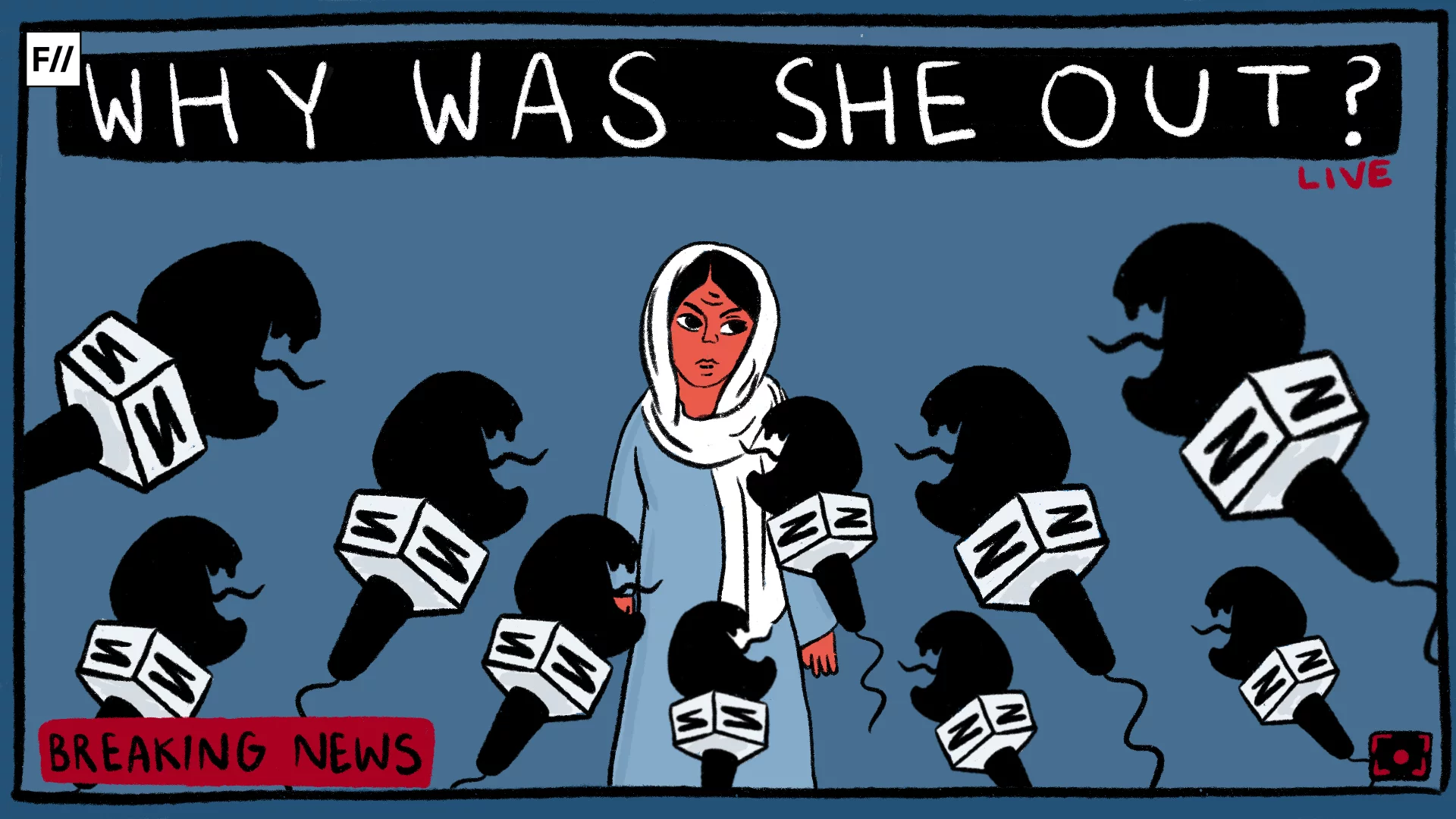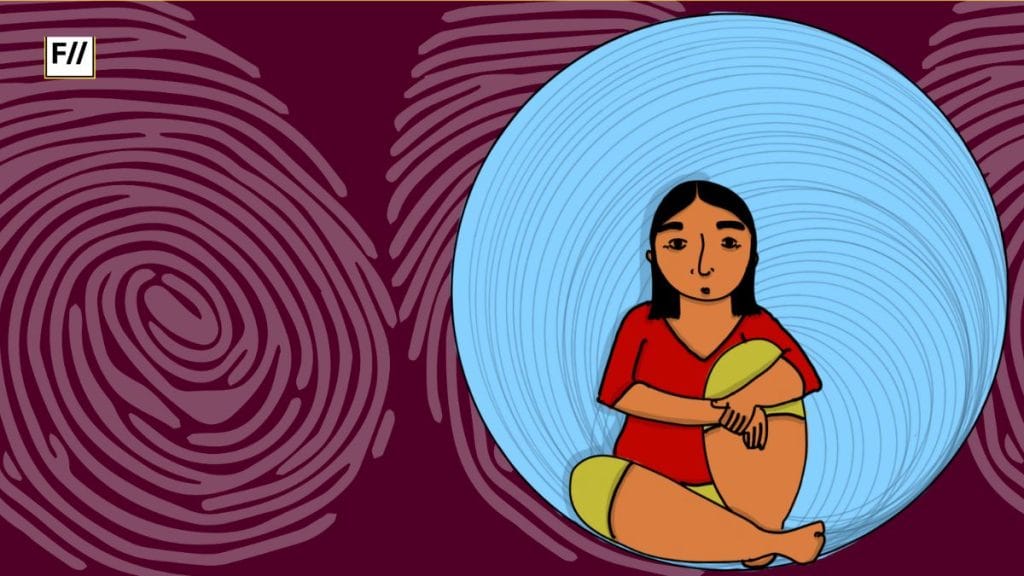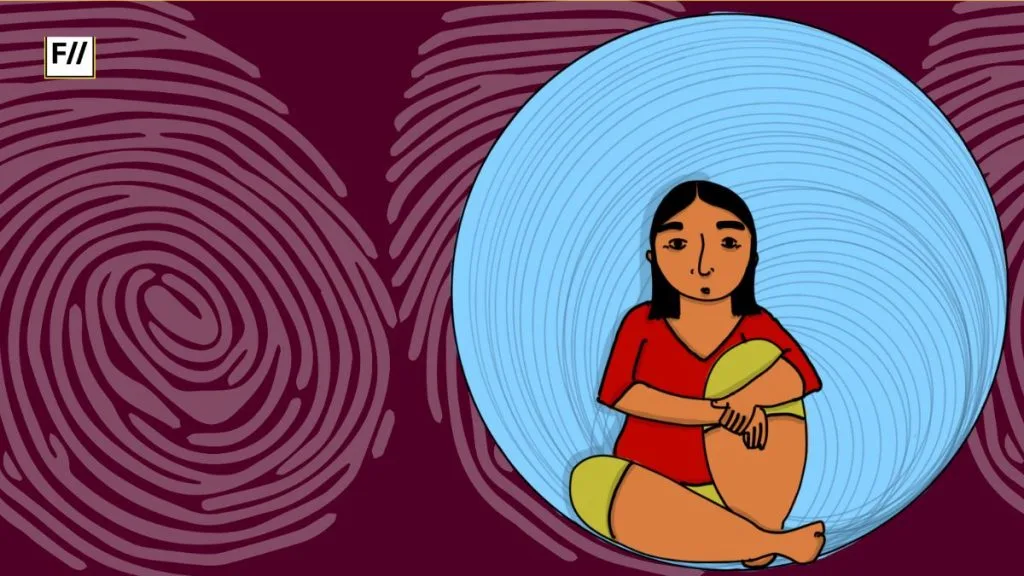Spoiler alert: This is a review of the film ‘Chor Nikal Ke Bhaga’ and discloses the plot and climax.
The movie Chor Nikal Ke Bhaga starts as a typical romantic story. There is a chance meeting of the hero and the heroine on an aeroplane, and in a clichéd fashion, there is a romantic spark created between them. From there ensues the routine sequence of events: light-hearted banter, the hero trying to woo the girl, romantic songs, and the eventual falling in love.
In the film, Chor Nikal Ke Bhaga, Neha Grover, the lead character played by Yami Gautam, is initially presented as ‘the girl next door’ with her simple charm and easy impressionability. She falls for Ankit Sethi — a stereotypical hero played by Sunny Kaushal — with his cool romantic attempts, stories of tragic past and troubled present, and suave and sophisticated personality.
However, as the narrative returns to the present day, the normative requirements of the romantic genre are overturned as an aura of menace enters the plot. The story returns to the aeroplane, but this time a feeling of unease and mystery captures the actions and expressions of the hero and the heroine. This promises some unconventional, engaging plot to the audience as elements of action-thriller, romance, and mystery genres come together in the movie.

In the movie, Chor Nikal Ke Bhaga, Neha Grover, the lead character played by Yami Gautam, is initially presented as ‘the girl next door’ with her simple charm and easy impressionability. She falls for Ankit Sethi — a stereotypical hero played by Sunny Kaushal — with his cool romantic attempts, stories of tragic past and troubled present, and suave and sophisticated personality.
The film, however, soon reveals both of these personality traits to be the masks adopted by the leads as the normal expectations from a hero and a heroine who are in love are punctured by the story. The plot then becomes a battle of wits between the two protagonists, and by extension, between the two genders.
The story takes a form comparable to a Sidney Sheldon novel as the aspects of a thriller, including a robbery, hijack, action sequences, threatening goons, and plenty of twists and turns, are employed to package the overarching concern of a woman challenging patriarchal frameworks.

By subverting the norms of the romantic genre, the movie then effectively questions the gender assumptions and power hierarchies of the genre to provide some form of feminist rebellion. The role-playing duplicity of the hero and the heroine — and their fabricated love story — shows that the “love” of all such love plots is constructed. It is not necessarily a natural emotion and is made up of certain clichéd elements which can be usurped for other agendas.
The movie is not simply a depiction of a woman triumphing over a man in a clever game of a high-stake robbery. Neha asserts: “I don’t just want diamonds, but I want to hear him scream; I want to destroy him in a way that he never forgets me.” It is ultimately a revenge plot where Neha, too, adopts the typical character of a woman-in-love to eventually shatter the patriarchal expectations associated with this figure.
Ankit takes up the garb of a traditional lover — peddled numerous times by popular media — to fulfil his mercenary motives. He exploits the conventional image of a hero, present in the minds of the heroine and the audience, to convince both of his virtue, innocence and true emotions. A major twist in the movie is unfolded as Ankit’s character is inverted from a hero to a villain. However, it is the reinterpretation of Yami Gautam’s character that has a bigger shock value.
The movie, Chor Nikal Ke Bhaga, is not simply a depiction of a woman triumphing over a man in a clever game of a high-stake robbery. Neha asserts: “I don’t just want diamonds, but I want to hear him scream; I want to destroy him in a way that he never forgets me.” It is ultimately a revenge plot where Neha, too, adopts the typical character of a woman-in-love to eventually shatter the patriarchal expectations associated with this figure.

Ankit, in his male privilege and misogynist mindset, assumes that Neha would willingly sacrifice and submit to his wishes as a dutiful girlfriend. He employs various problematic techniques of male entitlement, emotional blackmailing, and even occasional violence to convince her for the robbery as he takes it for granted that she would endure all of this in her love for him.
Neha, in her attempt to appease Ankit’s male ego, takes up the essential qualities of a male-serving woman. She portrays feminine self-depreciation, a caring attitude, meek obedience, and hysterical love. This does not seem an anomaly to Ankit who had expected her to act in this manner. Right till the end, she continues with this guise, allowing her to complete her revenge, and at the same time, escape any censure.
Ankit had assumed a woman as a means to an end — love as a means to an end — where both could be easily disposed of after their use value expires. It is the downfall of this mentality that the movie upholds in the end. Neha is not the weak, obedient girlfriend that Ankit had thought her to be, instead, she appropriates these attributes to enable her revenge plot.
Neha, in her attempt to appease Ankit’s male ego, takes up the essential qualities of a male-serving woman. She portrays feminine self-depreciation, a caring attitude, meek obedience, and hysterical love. This does not seem an anomaly to Ankit who had expected her to act in this manner. Right till the end, she continues with this guise, allowing her to complete her revenge, and at the same time, escape any censure.

She is able to collectively fool and triumph over all the male authorities in the movie — the police officer, the minister, the diamond dealer, and the fake lover — while carrying on the ruse of a vulnerable, innocent woman. In an analogy from the Greek drama, she becomes the eiron (“dissembler”) who is modest about her abilities to fuel the erroneous pride of her opponent, the alazon (“boaster”), to eventually bring him down.
Neha is not depicted as the helpless woman who is defeated after the betrayal from her lover and needs other people or destiny to avenge her. The emotional trauma of losing her child and suffering heartbreak is channelled by Neha in the movie to guide her fury and revenge. Her role is not limited to victimhood; she emerges as the true hero of the movie as she combines the qualities of bravery, wit, and most importantly, rightful moral purpose.
She eventually disarms the male arrogance of Ankit as a reversal of fortune inverts their respective roles. Neha hijacks Ankit’s mercenary ambition, mental peace, and vanity over his looks, to leave him defeated, bereft, and lost. On the other hand, in a ritualistic makeover, Neha emerges as rich and powerful, akin to almost a ‘femme fatale’. The final scene posits Neha as glamorously dressed, teasing, and towering above the acutely beaten, bedridden Ankit.

This makeover — used in the plot to highlight her achievement and to add to the spectacle — creates a dichotomy between the earlier simply dressed, innocent Neha and the final cunning and charming one. It makes the movie, Chor Nikal Ke Bhaga, part of the transformation narrative where a woman’s attractiveness gets proportionately related to her success in the plot.
The hero is neither the admirable lover nor the respectable victor. The heroine is neither a damsel-in-distress nor a madly-in-love girlfriend. Chor Nikal Ke Bhaga is about the eventual appropriation and rejection of these tropes to fight the patriarchal privilege and the mindset of assuming women as weak, obedient, and disposable beloved.
Chor Nikal Ke Bhaga is also attempting to link the wit, achievement, and physical allure of a woman. This is also indicated in the final interaction between Neha and Ankit, where Ankit tries to rewrite Neha’s revenge as an attractive quality: “I thought you double-crossed me for the diamonds. But revenge. Will you meet me again? I’ve fallen in love with you. It will be fun.” The movie is unable to escape this pitfall of viewing the female lead through the male gaze.

Finally, the movie tries to balance the entertainment quotient with the social message it tries to propound. Chor Nikal Ke Bhaga is filled with anticipatory drama, fast-paced action, and dynamic visuals. It is a melange of various thriller plots, including a big heist, an aeroplane hijack, police-thief pursuit, and a battle of wits. The movie is able to keep the audience hooked to the screen with its atmosphere of suspense and revelations.
However, it is in the twisting of the romantic genre that the movie’s unique potential is realised. The hero is neither the admirable lover nor the respectable victor. The heroine is neither a damsel-in-distress nor a madly-in-love girlfriend. Chor Nikal Ke Bhaga is about the eventual appropriation and rejection of these tropes to fight the patriarchal privilege and the mindset of assuming women as weak, obedient, and disposable beloved.





